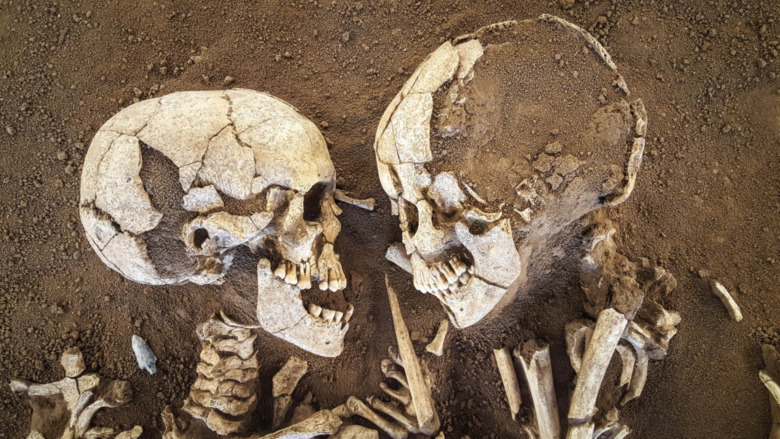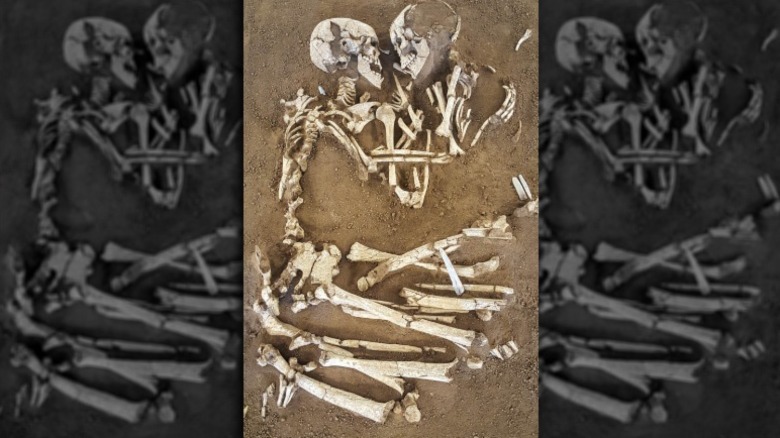What Are The Lovers Of Valdaro?
Visions of young lovers quoting "forever," gazing into each other's eyes, placing their foreheads together, bodies entangled: This is the stuff of dreams, desires, and narratives the world over. "Romantic love," as we commonly call it, has undoubtedly existed for as long as modern humans have roamed the earth, despite only appearing in ancient texts as recently as the 12th century (at least in the West), as the University of Oxford explains. And the relationship between love and the socioeconomic, politicized institution of marriage? Only the 18th century, as the Salt Lake Tribune relates.
"True love," however we define it, remains one of the chief pillars of modern life, no matter how it's come to be colored through romcoms at movie theaters, serialized romance novels, and an historical legacy of poets such as early 19th-century Percy Bysshe Shelly and Lord Byron. At the same time, whenever we see evidence of steadfast devotion and unwavering commitment, we tend to stand in awe. "You've been together how long?" the question might go. Such is the fragility of the dream of love: It's so close to the heart that it's almost better to wish that it couldn't be true than to live with its lack.
But what if we saw evidence — ostensibly — of love so deep that, for all intents and purposes, it really has been "forever," or till death did they part? Laying side-by-side, facing each other, now turned only to bones and dust?
Two lovers locked in an embrace for 6,000 years
In 2007, such evidence was found in the village of Valdaro in Mantua, Italy, about 40 kilometers south of Verona, as The Vintage News relates. Two skeletons, about 20 years old each, each 5'2". A young man and a young woman, huddled close together, arms and legs entangled, locked together for about 6,000 years. We have only their posture and positioning to tell us everything about who they were. Twin burials are exceedingly rare for the Neolithic era, although we know that they were placed together after death. There's no evidence of violent death, though (Romeo and Juliet fans: apologies), and they were buried with tools: he, a flint arrowhead near the neck; she, a flint blade along the thigh, plus two flint knives.
The Lovers of Valdaro came to immediate international attention upon their discovery by archaeologist Elena Maria Menotti. As Italy Villas states, they were not separated, but moved together, still encased in soil, to Musei Civici in Como for research purposes. They've been on display in the National Archaeological Museum of Mantua since 2011.
The association "Lovers in Mantua," as Time explains, states that the couple needs €250,000 (not quite $300,000) for their own exhibition center, and €200,000 (about $240,000) for a multimedia space to tell their story. Whatever that story is, though, is still unclear. Less unclear is the symbolic meaning that the young couple carries for us in the present, and how visions of love never cease to amaze and inspire.

